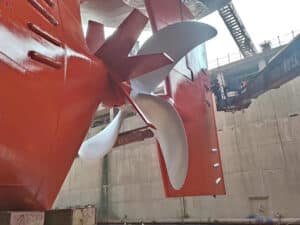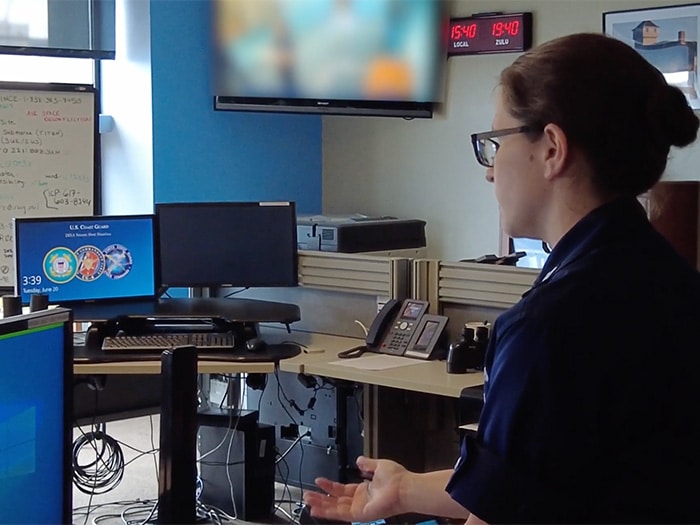
Missing submersible: Underwater sounds detected
Written by Nick Blenkey
A Unified Command is now working on the response to the missing Titan submersible. [Screen grab from USCG B-roll video]
As the search for the OceanGate Expedition’s missing submersible Titan continues, U.S. Coast Guard First District reported last night that a Canadian P-3 aircraft had detected underwater noises in the search area.
[UPDATE: In today’s briefing (see video at bottom of this post ) those noises were described as “banging noises” and subject matter experts put that into perspective.]
As a result, ROV operations were relocated in an attempt to explore the origin of the noises. Those ROV searches have yielded negative results but continue. Additionally, the data from the P-3 aircraft has been shared with U.S. Navy experts for further analysis which will be considered in future search plans.
That news came after yesterday’s press briefing which announced that the U.S. Coast Guard, U.S. Navy, Canadian Coast Guard and OceanGate Expeditions have established a unified command to continue the search for the 21-foot submersible research Titan.
The submersible was reported missing, with five people on board, by the Research Vessel Polar Prince at 5.45 p.m., Sunday evening. The submersible was launched at 8 a.m. on what was intended to be a dive on the Titanic wreck and expected to resurface at 3 p.m., but an hour and 45 minutes into the dive, lost contact with the Polar Prince. At the time of launch the submersible reportedly had a 96 hour oxygen supply.
The Polar Prince is listed on the IMO data base not as a research vessel but as a buoy tender. It was built in 1959 and served as the CCGS Sir Humphrey Gilbert, a Canadian Coast Guard light icebreaker, until 1986. Since then it has had a number of owners and roles, the most recent, apparently, to serve as a mother ship for the Titan.
As of Tuesday morning, a total of 10,000 square miles have been searched in favorable weather conditions with an increase in visibility from the previous day.
The Bahamian research vessel, Deep Energy, arrived on scene around 7 a.m. EDT and began remotely operated vehicle (ROV) operations. A C-130 crew from the Air National Guard 106th also arrived on scene to continue searching around 4 p.m. EDT.
The following assets were en route as of yesterday:
- Canadian CGS John Cabot
- Canadian CGS Ann Harvey
- Canadian CGS Terry Fox
- Canadian CGS Atlantic Merlin (ROV)
- Motor Vessel Horizon Arctic
- Commercial Vessel Skandi Vinland (ROV)
- French Research Vessel L’Atalante (ROV)
- HMCS Glace Bay (mobile decompression chamber and medical personnel)
Three of those vessels arrived on-scene Wednesday morning. The John Cabot has side scanning sonar capabilities and is conducting search patterns alongside the Skandi Vinland and the Atlantic Merlin
“This is a complex search effort which requires multiple agencies with subject matter expertise and specialized equipment which we have gained through the unified command,” said Capt. Jamie Frederick, the response coordinator from the First Coast Guard District. “While the Coast Guard has assumed the role of Search and Rescue Mission Coordinator, we do not have all of the necessary expertise and equipment required in a search of this nature. The Unified Command brings that expertise and additional capability together to maximize effort in solving this complex problem.”
The Titanic wreck is at a depth of 12,500 feet. That’s about twice the maximum depth at which it is believed a Los Angeles class submarine can go.
Here’s a video of today’s Unified Command press briefing




